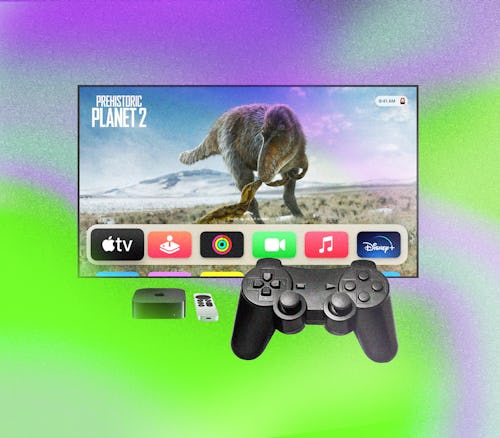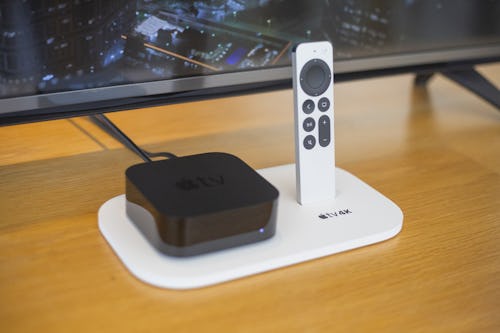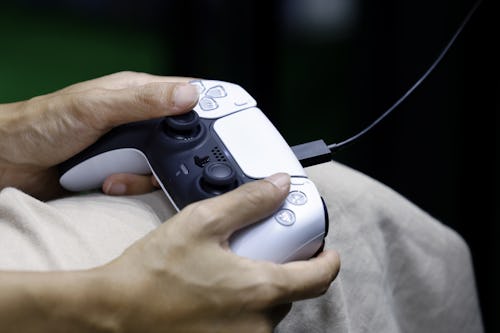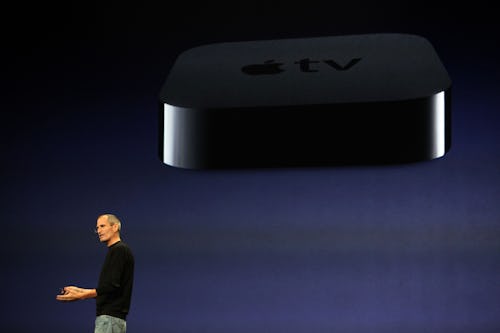
Apple’s decision to finally take gaming seriously hasn’t entirely gone according to plan. We’ve now learned that putting console-quality games on the iPhone, iPad, and Mac, has translated to only thousands of sales as opposed to millions. And on the whole, Apple Arcade just isn’t what it should be. But Apple has a solution waiting in the wings — if it wants it.
For a long time, the case for gaming inside of Apple’s walled garden was that the iPhone was popular, and mobile games landed there first. As of late, the same hardware shifts that reinvigorated the Mac have also made them great places to play games, too. M-series chips (based on the Arm architecture of Apple’s A-series iPhone chips) made Apple’s laptops and desktops more performant and power-efficient. In turn, Apple has started to court AAA developers like Kojima Productions, Ubisoft, and Capcom, even giving them time to hawk their games (and talk up Apple) in their own keynotes. Apple also hasn’t been shy about advertising games like Death Stranding or Assassin’s Creed in the App Store.
But that clearly hasn’t turned into the monster sales you’d think Apple’s platforms — and its billions of users — would offer. It could be because these games weren’t explicitly designed for touch, but I think it has a lot more to do with the fact that on an iPhone, iPad, or Mac, a video game competes for space, processing power, and attention in a way it wouldn’t on a dedicated gaming device. That’s why to make this new era of gaming work, the Apple TV set-top box should become Apple’s game console. It’s already halfway there — plugged into millions of TVs.
The Pieces Are All There

If you really think about it, Apple has everything it needs to make the Apple TV into a home console. Consider that the Apple TV already runs on old iPhone hardware, specifically the iPhone 13’s A15 Bionic chip. That’s allowed the set-top box to play everything on Apple Arcade (and the few console-quality games developers have made specific Apple TV versions of), but it’s not really pushing the envelope on what’s possible. That would change with an M-series chip.
If you ask Apple, it claims that gaming was in mind from the beginning when it was developing the first M1 chips. Gaming was clearly a priority while designing the more recent family of M3 chips, which focused on GPU improvements that allow for ray tracing and mesh shading, among other optimizations. Apple has managed to push these improvements further with software, too. “Game mode,” added in macOS Sonoma and coming to iOS and iPadOS 18 later this year, gives games priority access to an M-series chip’s CPU and GPU for faster performance when it’s enabled. It also doubles the Bluetooth sampling rate for lower latency connections to AirPods.
Even Apple’s approach to selling software has some similarities to popular current consoles. When you buy an app on the App Store, you can use it on all the other Apple hardware you own, provided developers have enabled it. That means a game that you bought on your iPhone can be played on the Apple TV if there’s a tvOS version of it. Xbox Play Anywhere games work similarly on the Xbox. If developers enable it, a game you bought on the Xbox can be played on Windows at no additional cost if it’s part of the Xbox Play Anywhere program. Apple Arcade itself has a lot in common with Xbox Game Pass, both in terms of the library of games the services curated and the ability to play them on any screen you own.
What’s really stopping Apple from combining all of these pieces into a next-gen Apple TV?
Apple Should Make a Controller

I think the answer might be a consistent way to play all of these games. What if Apple made a controller that would work and feel great regardless of what screen you’re playing on? Now the fantasy of an Apple console isn’t a new one. Every time Apple’s financial success in games or the power of its mobile hardware comes into focus, people fantasize about what could be. But those dreams are grounded in an actual reality: Apple has made a console before.
The Apple Pippin was developed with Bandai (now known as Bandai Namco, publisher of Elden Ring) as a way to play Macintosh CD-ROM games in a more console-like setting. The Pippin was a failure, largely because it was too complicated, but it was an early example of Apple not only designing an internet-connected box for living rooms but also game controller, in the form of the wireless, wing-shaped AppleJack. Even though the Pippin failed, that doesn’t mean Apple would necessarily be a bad console maker. If anything, the company is in a better position than ever to make it happen.
I can really think of no better way for Apple to show its commitment to AAA gaming than creating a controller.
With an M-series chip, more memory, and adequate cooling, the Apple TV wouldn’t need to change all that much. Apple’s work on other wireless Bluetooth products could easily translate to a controller, one meant to seamlessly connect to wherever you wanted to play games next, be it the Apple TV, iPhone, iPad, or Mac. Throw in an H2 chip for quick switching between different Bluetooth connections, Find My capabilities to make it easy to locate between couch cushions, and an ergonomic design that makes it comfortable to hold and you’ve got a recipe for an Apple-made controller that would stand out. I can really think of no better way for Apple to show its commitment to AAA gaming than creating a controller.
The Apple TV Is Ready For Its Next Phase

Steve Jobs famously called the Apple TV a “hobby” and even though the streaming box has become more powerful and popular than it was at its introduction, it hasn’t ascended to coveted status the way iPads or AirPods are. The Apple TV is a perfect example of Apple’s interest in the living room, but also its inability to do meaningful business outside of Apple TV+. Turning the Apple TV into a game console could be just the thing that transforms the black box from a way to watch TVs and movie shows to something people can’t — or don’t — want to live without. AAA games would also be another way to drive App Store sales.
Nintendo has its own pedigree and in-house development teams, but it’s not doing anything from a hardware perspective that another company couldn’t do. The Nvidia Tegra X1 in the Switch is a mobile processor in the same way the M1 is (and a weaker one at that). With better chips, a controller, and even more effort to get developers targeting the App Store, there’s really nothing keeping the Apple TV from becoming what it should have been from the start: a small form factor game console.
FTTT
0 Comments